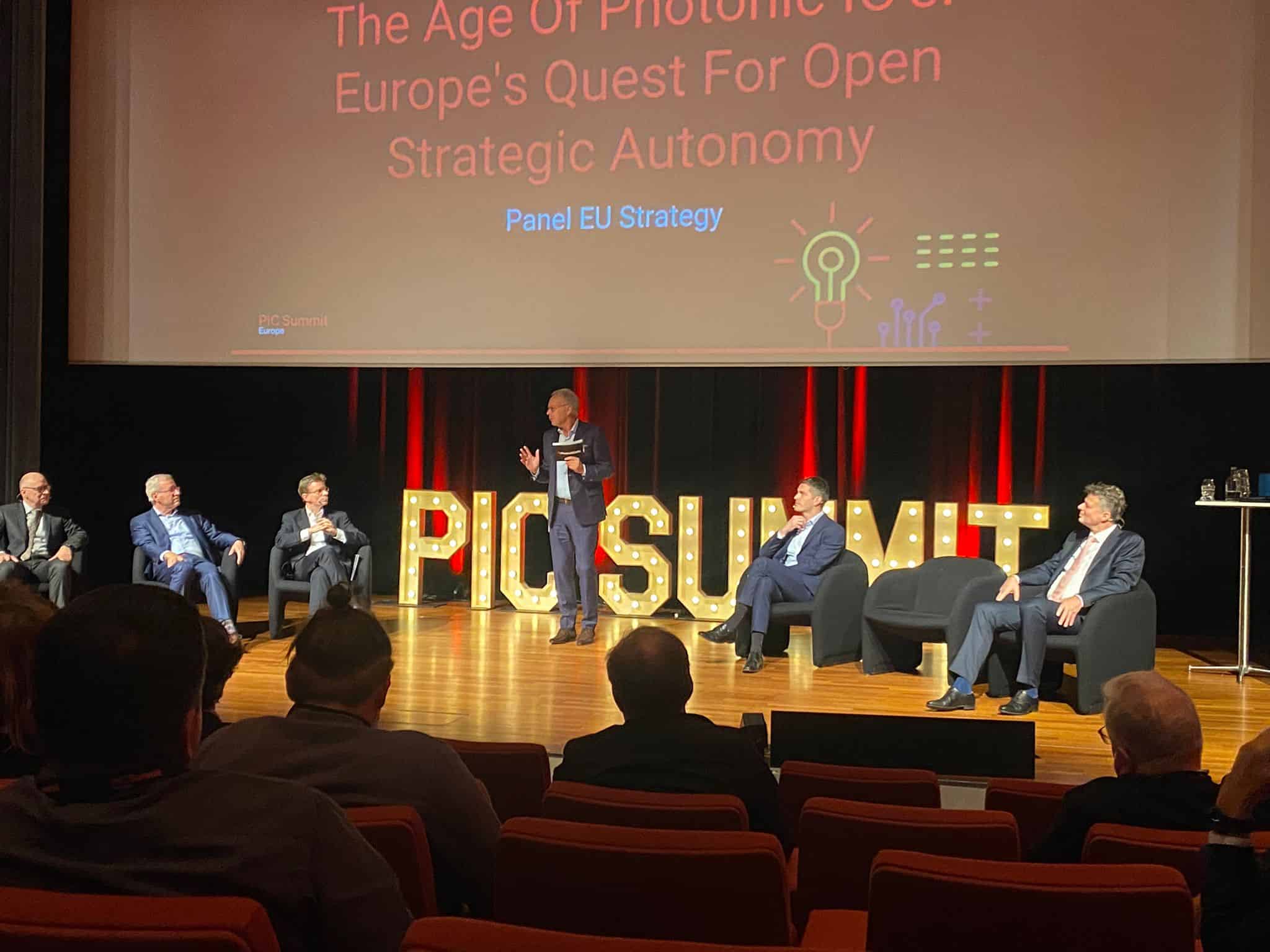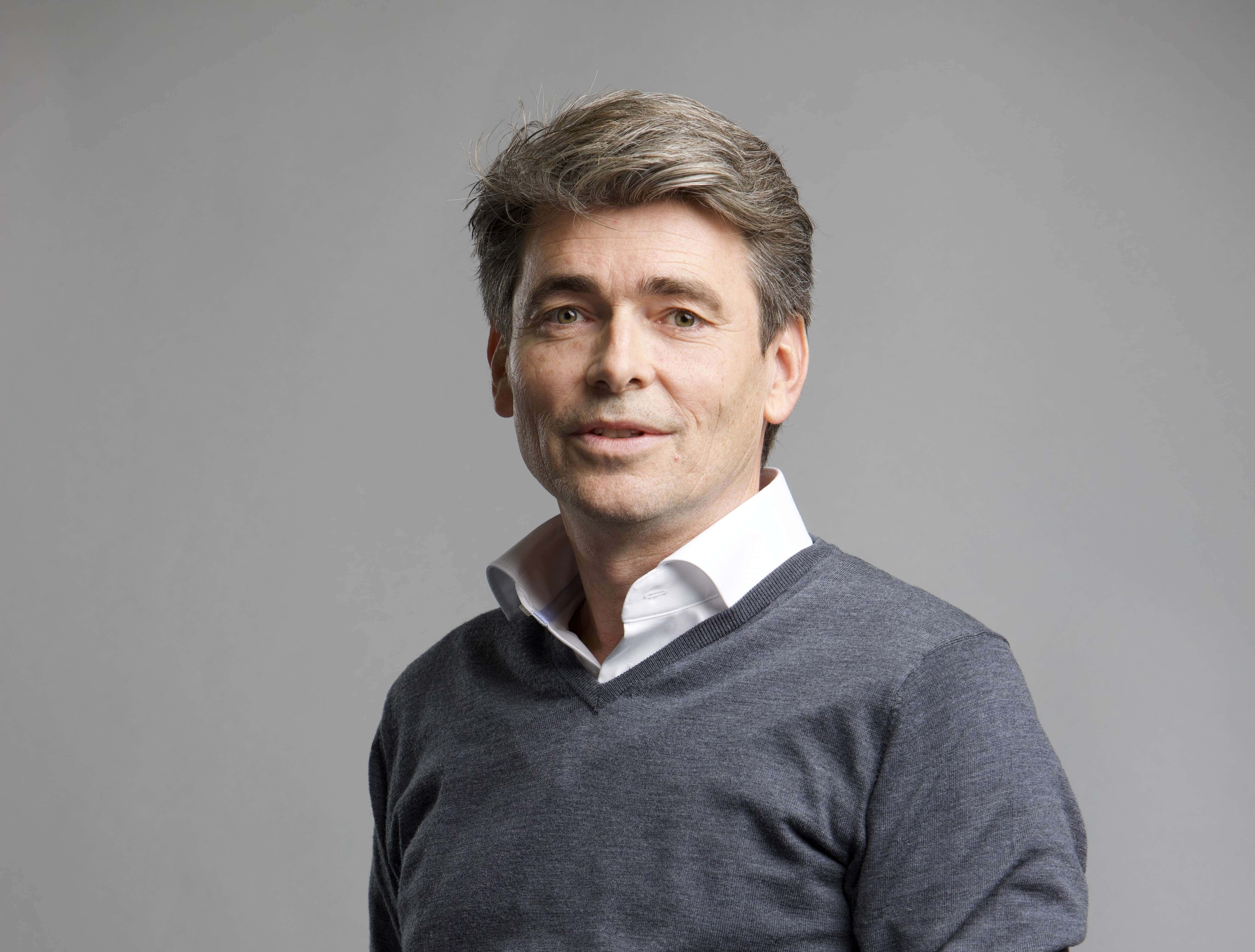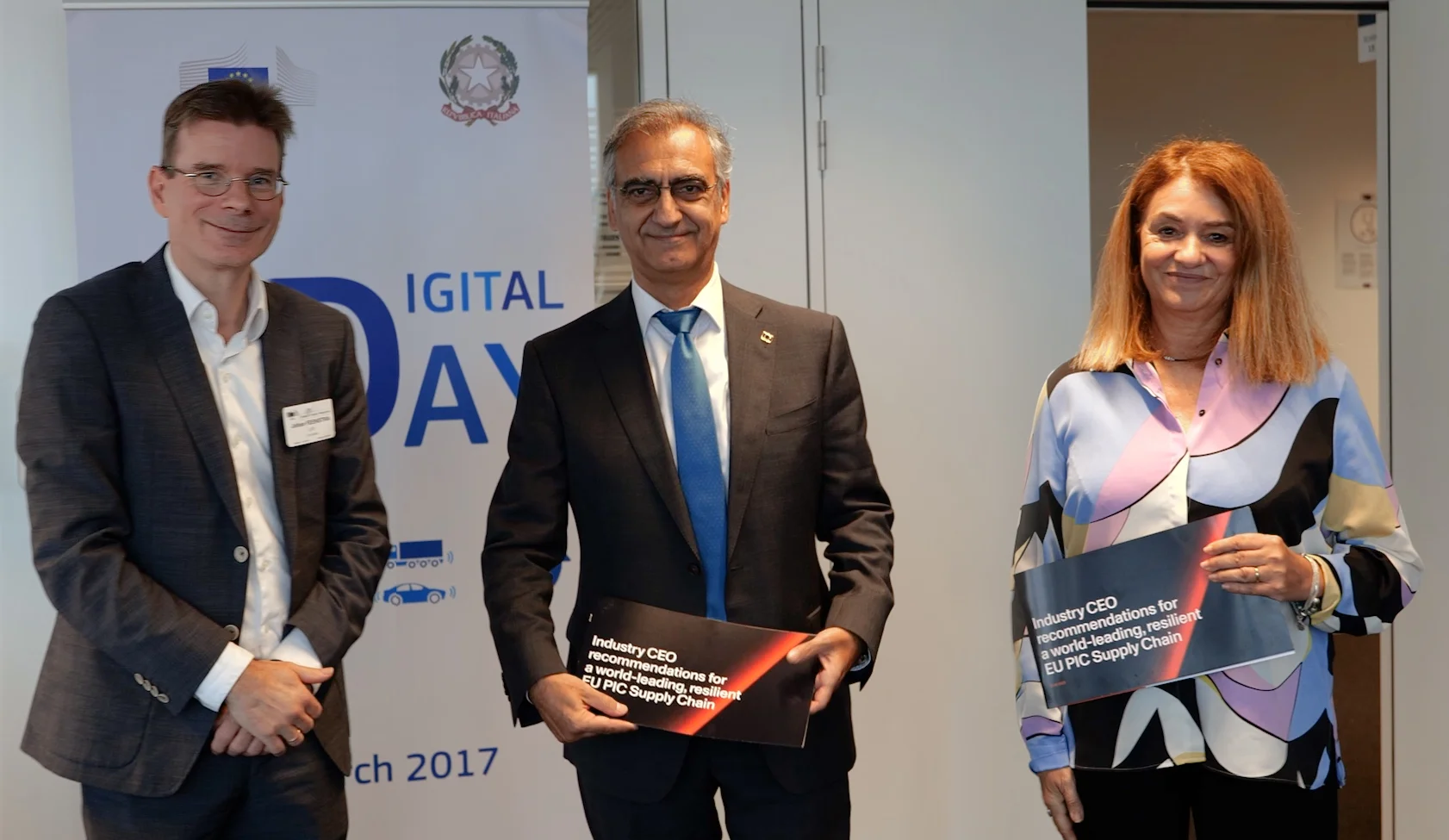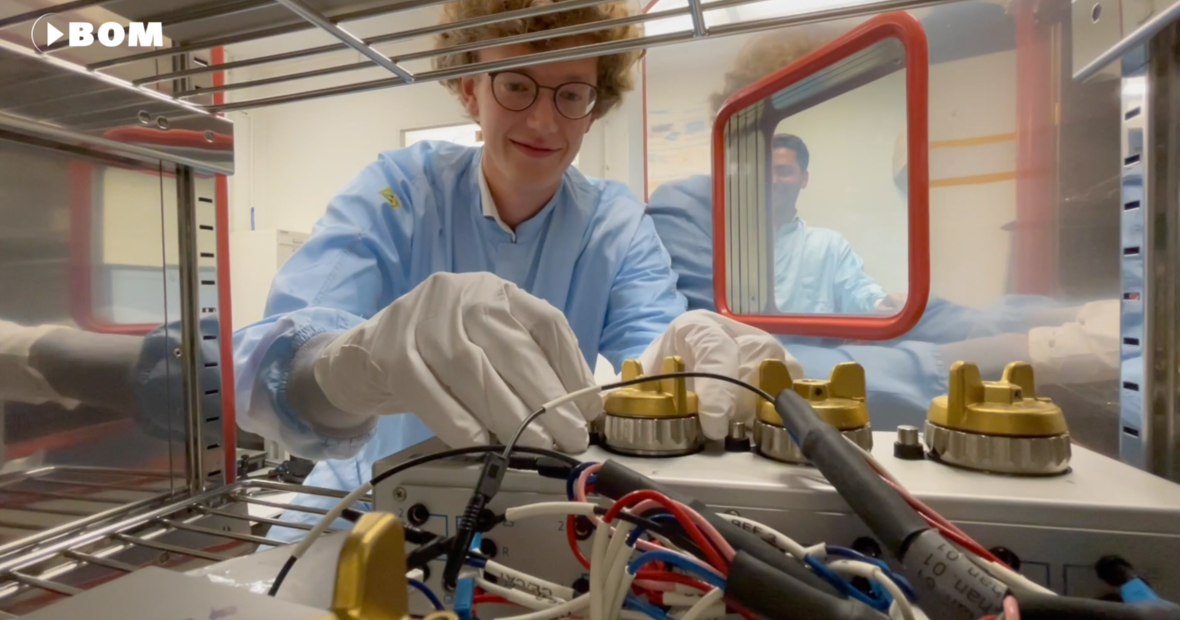
Faster, lighter, more durable, and ultimately also cheaper: the advantages of photonic circuits are considerable, for a wide range of applications. And the Netherlands plays an important global role in the development and application of this key technology. In recent years, partly due to the policies of the government, provinces, and Brainport, PhotonDelta has laid a solid foundation under the Dutch photonics ecosystem. Thanks to the work of the technical universities and institutions such as TNO and imec, there is a strong knowledge base, specialization on two essential production platforms, and a supply chain that provides prototyping and initial production.
Staying ahead of the competition
Thanks to these developments, the Netherlands has acquired a distinctive position in integrated photonics at the global level. Now it is time for a series of follow-up steps, says PhotonDelta director Ewit Roos. “In this way, we can stay ahead of the competition and strengthen Europe’s intended strategic autonomy in photonics.”
What is integrated photonics?
Photonics is similar to electronics. However, instead of electrons, it uses photons (light) to transmit information. Photonic technology detects, generates, transports, and processes light. Current applications include solar cells, sensors, and fiber-optic networks.
Photonic chips, also called Photonic Integrated Circuits (PICs), integrate various photonic and often electronic functions into a microchip to make smaller, faster, and more energy-efficient devices. This is very much visible in, for example, data centers: by harnessing the power of light, PICs can process and transmit data more effectively than their electronic counterparts. As with traditional chips, the manufacturing process is via automated wafer-scale technology. This allows the chips to be mass-produced, thus reducing costs.
The current technology revolution – driven in part by increasing demand for digital solutions – is accelerating the creation of data and digital devices. Electronic microchip technology cannot keep pace with that development. Integrated photonics offers a sustainable solution to society’s energy consumption and technological challenges. The ultimate application range is broad, from energy-efficient data communication to sensors for medical applications and battery management in cars.
The Dutch ambition stems from two developments, says Roos: “The digitizing world needs photonic functions to tackle the major challenges of our time and Europe is ready to take up a strategic position in the various value chains. The Netherlands is taking the lead in this, in close cooperation with other European partners. R&D, logistics, operational and industrial: we are deploying our wealth of knowledge and experience to take up a position in this rapidly growing global market.”
No substitute for electronics
Roos sees several underlying explanations for the growing importance of photonics: the lower energy footprint of transport with light (photons) and the enormous demands on sensors to sometimes recognize, smell or measure themselves remotely and real-time cannot be done without light technology and the low-loss transport properties of certain photonic circuits that are essential for quantum computing, for example. “Light has different applications than electricity. Light will therefore never be able to replace electronic circuits. That is why there is so much interest from the semiconductor industry in integrating photonic functions into or alongside electronics: it enriches and enables new applications.”
Health, agrifood, mobility, data & telecom (see also the box at the bottom of this article) are perhaps the most obvious sectors to benefit from photonic solutions. Roos: “We all know by now what is in store for us in terms of the energy consumption of data centers. It is a misconception, however, that integrated photonics is the answer to this problem; first of all, a multitude of other factors need to be addressed. However, integrated photonics can no longer be ignored as a technology to keep up with the relentless growth in data traffic. Without photonics, Netflix would be a faltering slideshow in the living room. Or look at the use of photonic sensors in medical and agricultural applications, or in the aircraft industry: examples that underscore the enormous importance of this technology. For the development of quantum computing, integrated photonics is even indispensable.”
What is PhotonDelta?
PhotonDelta provides an end-to-end supply chain that designs, develops, and produces applications with photonic chips. Intensive collaboration among all participants and partners is at the heart of the initiative, from start-ups to photonics research institutions, all specialists in the design and manufacture of integrated photonics technology.
Together, they are driving breakthrough innovations in the application of light to solve some of the world’s biggest problems.Based in the Netherlands, a country at the forefront of integrated photonics research, PhotonDelta partners are pioneering new products and solutions in multiple markets and product domains. PhotonDelta connects pioneers in the field of integrated photonics with investors and viable markets. In this way, market acceptance is accelerated and facilitates the realization of groundbreaking innovations with photonic chips.
Position in the global market
What the sector is now up against is the phase of further industrialization, which involves economies of scale (i.e. cost reduction per PIC) and integration on the existing large production platforms of the existing semiconductor industry. For Roos, there is no doubt: “The world sees this potential and is investing in it. As an ecosystem, but also in a European context, we are of course anticipating this by excelling and concentrating on what we are good at. Only then can we take a position in those global value chains.”

This requires strategic choices. Although definitely not yet in industrial prime, the PhotonDelta ecosystem does potentially already have a full supply chain and two PIC production platforms Indium Phosphide (InP) and Silicon Nitride (SiN), next to imec’s Silicon Photonics (SiPh) pilot line. “These are needed separately or in combination in many (partial) solutions, so it is important to be connected to the international value chains where those solutions are made. That can be in the Netherlands, after all, we also have a well-functioning ‘packaging & assembly’ activity, or as co-production in a foreign factory.”
Red next: Smaller diffuser for new optics and photonics applications
Either way, it is essential to connect the Dutch platforms to the international and complementary production platforms. For example, a stone’s throw from the Dutch border, in Leuven, there’s imec’s globally recognized expertise and international ecosystem on Silicon Photonics. An interregional collaboration ensures that the Dutch specialty platforms can develop in full synergy with the high-volume CMOS-based Silicon Photonics platforms that are now being rolled out internationally.
The key is to have – at least – the right and best ingredients needed for a particular end product, says Roos. “For example, a LIDAR for an autonomous vehicle or a measurement module to monitor the shock resistance of a tower block in Taipei. And that’s what we’re focusing on: we’re building the most complete library of building blocks possible so that the world comes to us to get the PIC or assembled modules they need for the applications they want to make.”
Attracting additional business
The consequence, the PhotonDelta director assures us, is that you build up a position in various value chains because you can offer PIC or modules with world-class functionality at the best price. This in turn will also lead to additional activity in the Netherlands itself. “The ecosystem attracts not only money but also companies from abroad. So that’s what the Netherlands is steering towards as well.”
We’re building the most complete library of building blocks possible so that the world comes to us…
Ewit Roos, director PhotonDelta
There is no time to lose, says Roos, especially because of the cut-throat competition from countries where government support is much more natural than in the strictly regulated Europe. International cooperation is desperately needed, he emphasizes. The big players in the existing chip industry are being watched closely, but that certainly also goes for the world-renowned research institute imec, which has its headquarters in Leuven but also has several branches in the Netherlands. “Imec is a world leader in applied research for the semiconductor industry and the right partner to achieve a top position with integrated photonics as well.” Imec Netherlands has joined Photondelta from Holst Centre in Eindhoven, also to further strengthen the collaboration with Leuven in this way. PhotonDelta will make use of imec’s world position on SiPhotonics, a third production platform alongside InP and SiN.
Economic sustainability

PhotonDelta expects that the continued development of the European photonics ecosystem will lead to benefits beyond its own sector. “Photonics stimulates innovation and activity but also ensures an attractive business climate and attracts capital. Both are important conditions for economic sustainability. Around PIC production, a shell of specialized design firms will emerge whose building blocks will allow them to efficiently convert the requirements from individual market segments into chip designs. It is certainly conceivable that their customers would also want to establish themselves in the immediate vicinity of such a cluster.”
Moreover, according to Roos, the Netherlands benefits because all relevant economic activities in the value chain, from equipment development to sales, research, product innovation, design, production, and final assembly, can be carried out in the Netherlands.
The many applications of Photonics
Those who get lost in all the details of the fascinating technology behind photonics would almost forget that ultimately it is about the applications that can make an important contribution to the solution of our major social issues. The most obvious areas are data & telecom, health, mobility, and agritech. The success of these industries is, of course, not determined by photonic elements alone, but it is certainly facilitated by them.
Data & telecom
Global data traffic is doubling every two years. As the growth rate is likely to increase further in the future, optical communication and networking technologies are becoming essential to accommodate this growth in an energy-efficient and sustainable manner. The biggest challenge within this domain is the high energy consumption of data infrastructure. Without any savings made, the share of data and internet use is expected to be around 10% of global electricity consumption by 2027. This includes energy consumption by end-users on the one hand and data centers on the other. 5G, the Internet of Things, and artificial intelligence will further accelerate this. Photonics provides gains in speed, weight, and energy consumption.
Health
Major challenges for Europe in the field of life sciences and health are an aging society, the increase in age-related diseases, and rising costs of the healthcare system. The development of mobile, wearable photonic devices (combined with advanced biosensors for direct point-of-care diagnostics and treatment that measure the medical condition and well-being of the wearer) can contribute to early detection and diagnosis of diseases, as well as an earlier and more targeted treatment. Photonics will eliminate the need for a visit to the hospital for many treatments or consultations.
Mobility
The biggest challenge in automotive in the near future lies in the availability of affordable sensors to enable autonomous driving at various stages. With the advantages of photonic chips (weight, speed, cost), the possibilities for self-driving transport are increasing. This has positive implications for road safety and lost travel time is made available again. Photonics can also mean a lot for battery management in electric vehicles and the control of traditional cars. For the aircraft industry, the emphasis is on sensor systems.
Agrifood To feed a world population that is expected to reach 10 billion by 2050, a drastic increase in food production is needed. But this must be done in a sustainable way: without excess nitrogen or excess CO2 emissions and preferably also in a way in which animal proteins have made way for vegetable proteins. In addition, food safety is an important precondition. The solution lies in precision agriculture, something in which photonics can play a major role. Sensor systems that run on photonics ensure that all requirements regarding safety, health, and sustainability can be met.








